한국응용과학기술학회 논문 검색
.jpg)
A Study on the Usage Intention AI-Based Personalized Cosmetics Recommendation Services using the Value-Based Acceptance Model (VAM)
간행물 정보 : Vol. 42 No. 1, 2025년,
파일형식 : pdf


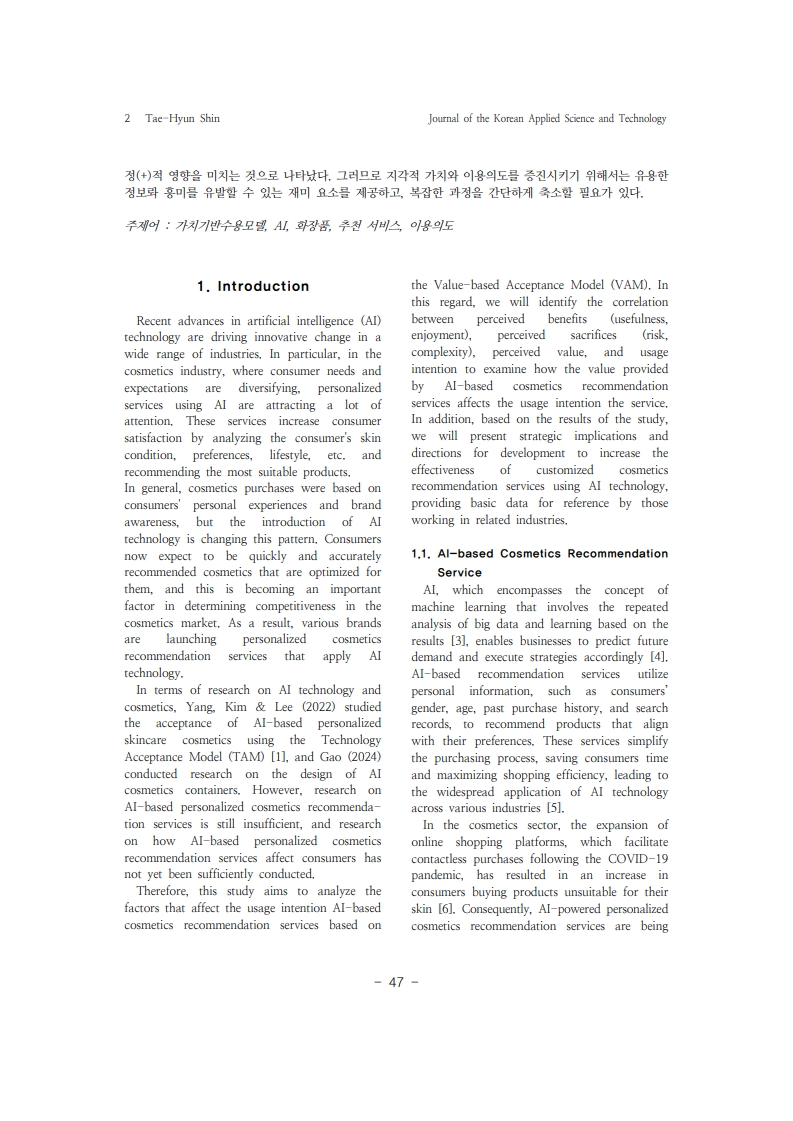
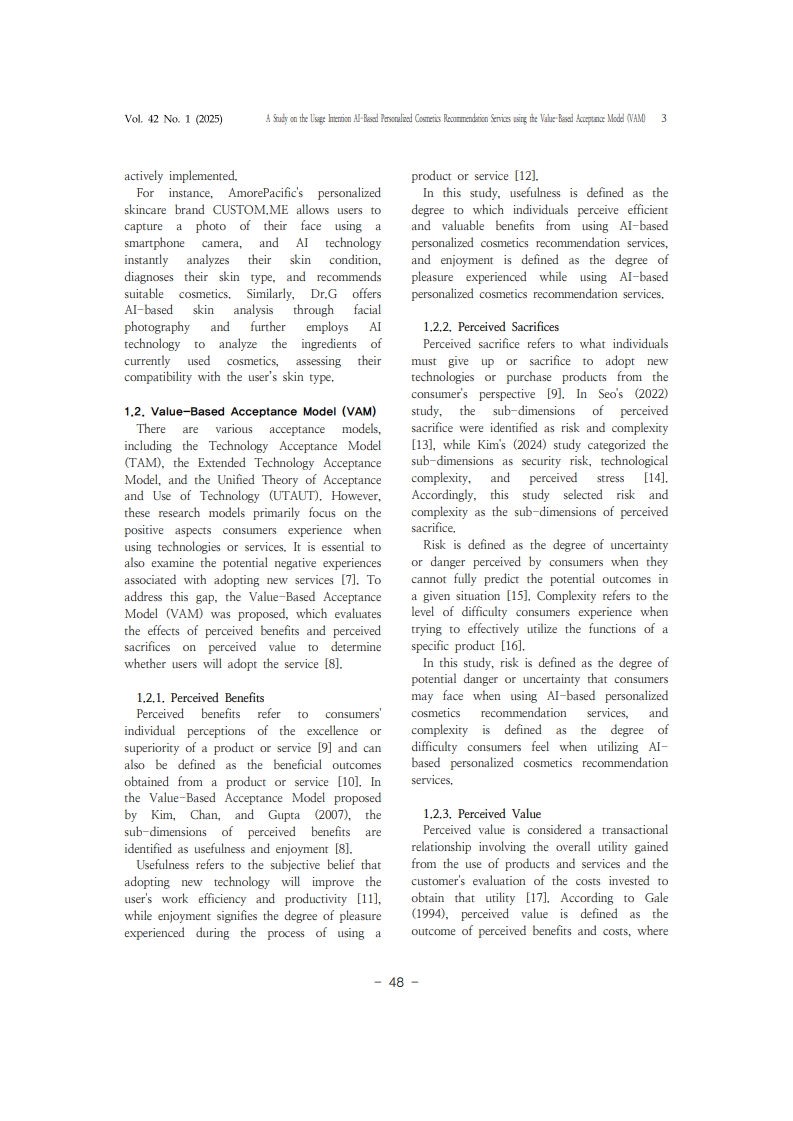
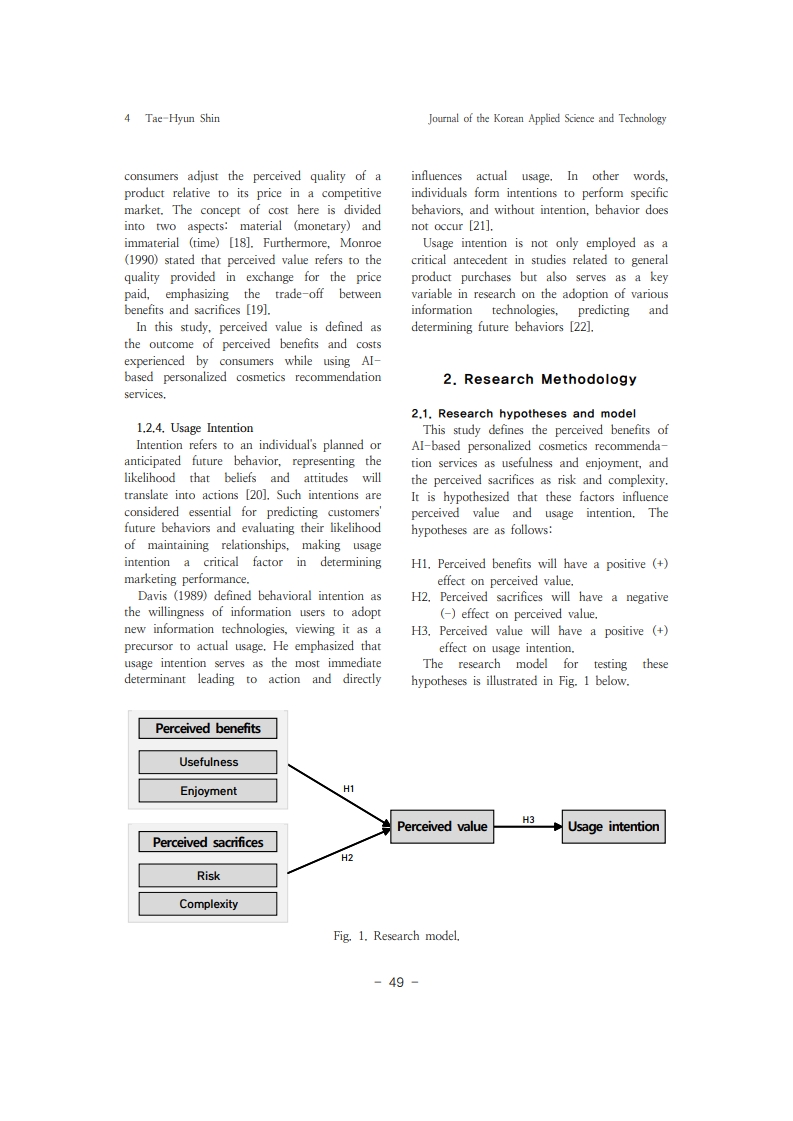

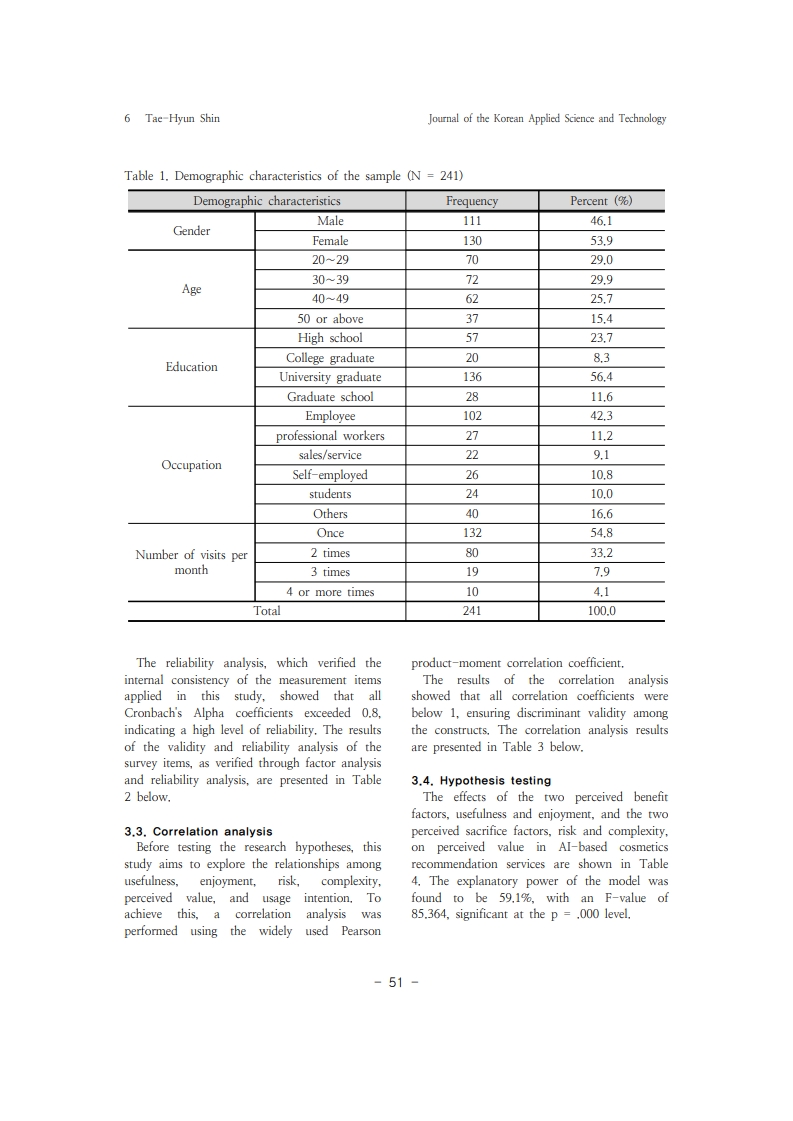
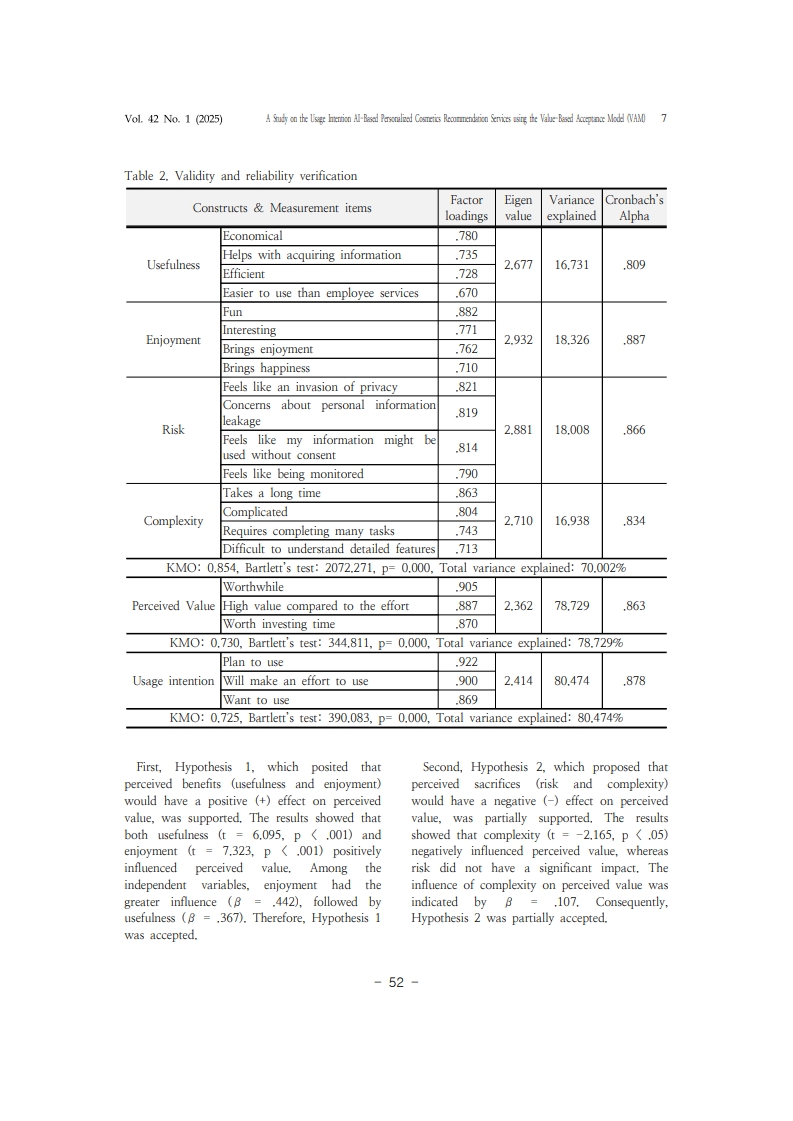
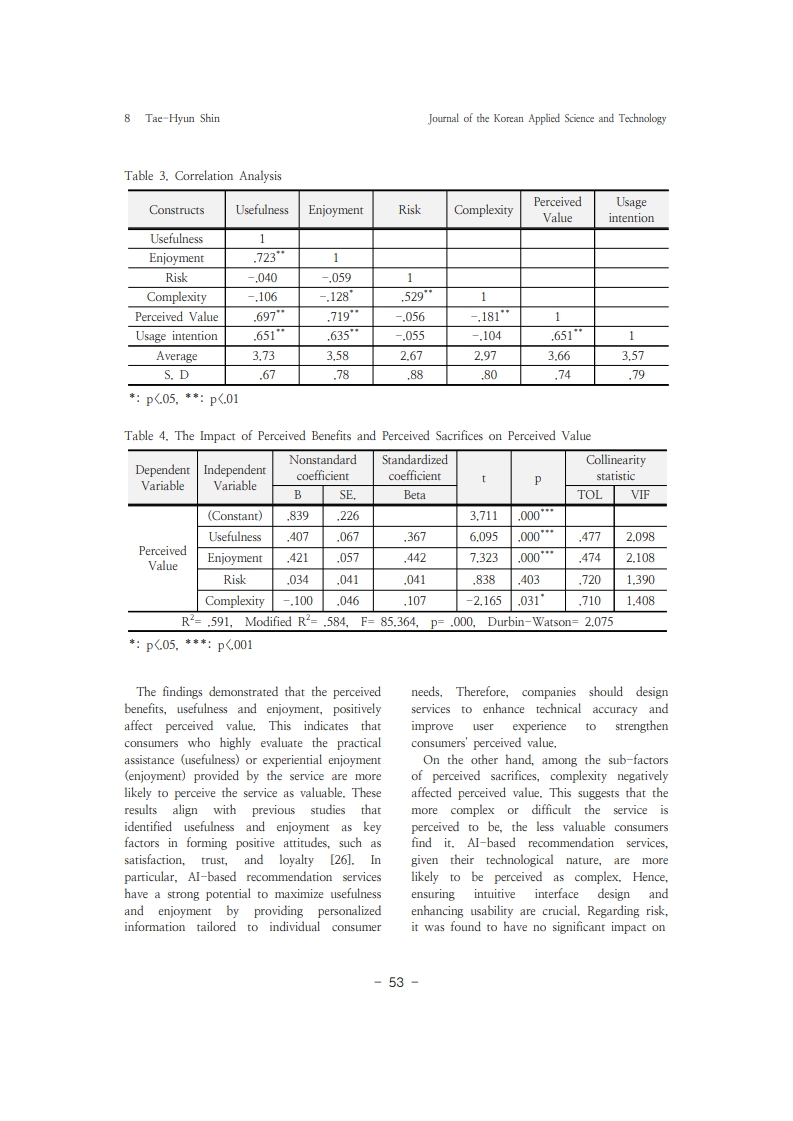

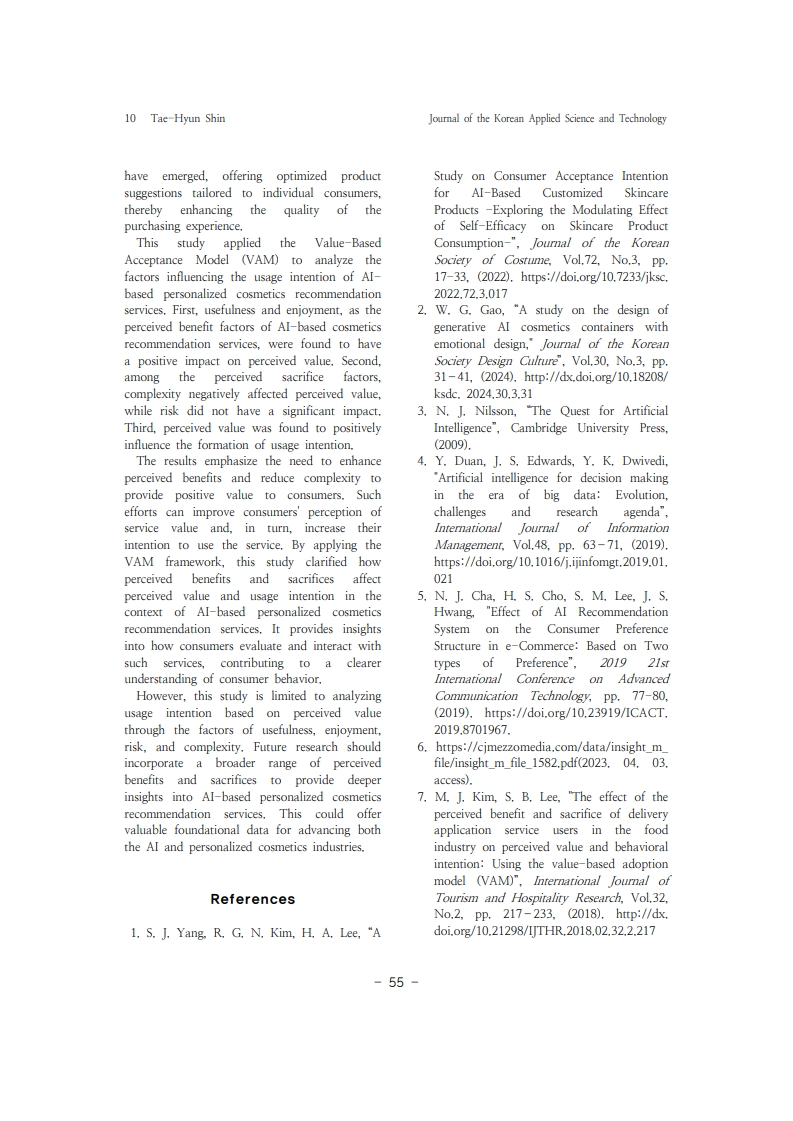
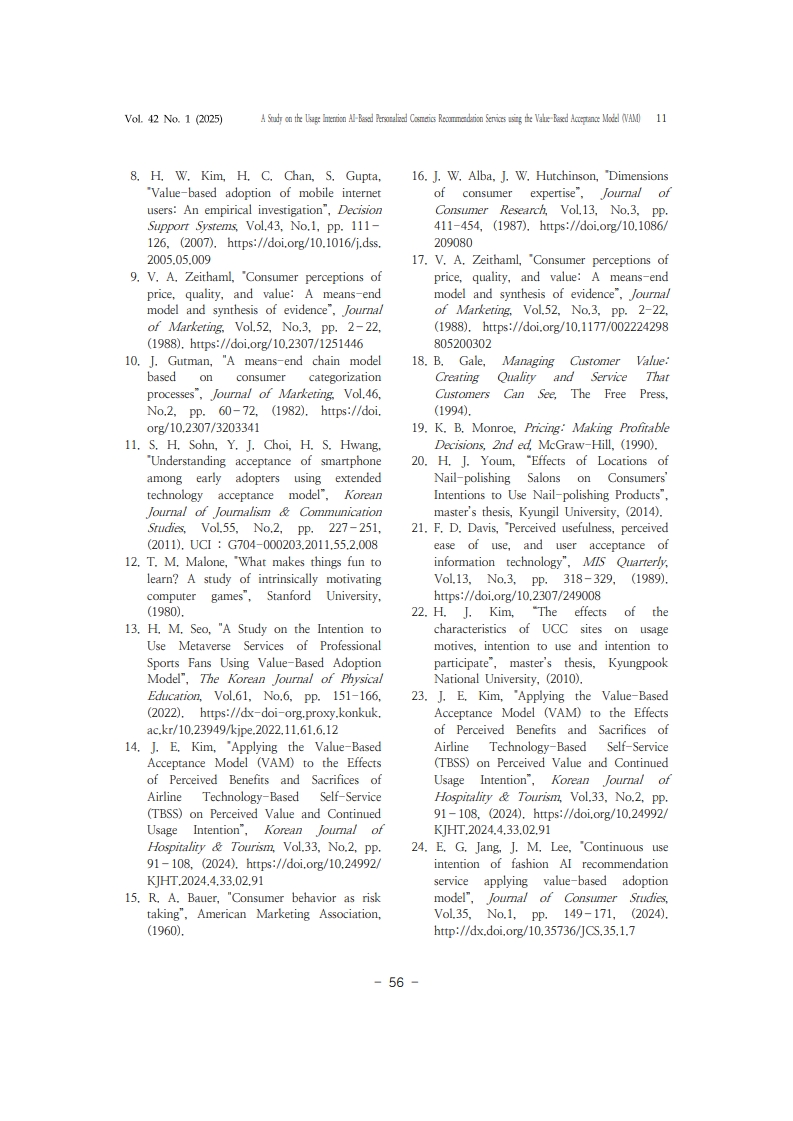
1. S. J. Yang, R. G. N. Kim, H. A. Lee, “A Study on Consumer Acceptance Intention for AI-Based Customized Skincare Products -Exploring the Modulating Effect of Self-Efficacy on Skincare Product Consumption-”, Journal of the KoreanSociety of Costume, Vol.72, No.3, pp. 17-33, (2022).
https://doi.org/10.7233/jksc.2022.72.3.017
2. W. G. Gao, “A study on the design of generative AI cosmetics containers withemotional design," Journal of the Korean Society Design Culture”, Vol.30, No.3, pp.
31–41, (2024). http://dx.doi.org/10.18208/ksdc.2024.30.3.31
3. N. J. Nilsson, “The Quest for Artificial Intelligence”, Cambridge University Press,(2009).
4. Y. Duan, J. S. Edwards, Y. K. Dwivedi, "Artificial intelligence for decision makingin the era of big data: Evolution, challenges and research agenda”,
International Journal of Information Management, Vol.48, pp. 63–71, (2019).https://doi.org/10.1016/j.ijinfomgt.2019.01.021
5. N. J. Cha, H. S. Cho, S. M. Lee, J. S. Hwang, "Effect of AI RecommendationSystem on the Consumer Preference Structure in e-Commerce: Based on Two
types of Preference”, 2019 21st International Conference on AdvancedCommunication Technology, pp. 77-80, (2019).
https://doi.org/10.23919/ICACT.2019.8701967.
6. https://cjmezzomedia.com/data/insight_m_file/insight_m_file_1582.pdf(2023.04. 03.access).
7. M. J. Kim, S. B. Lee, "The effect of the perceived benefit and sacrifice of delivery application service users in the food industry on perceived value and behavioral intention: Using the value-based adoption model (VAM)”, International Journal of Tourism and Hospitality Research, Vol.32,No.2, pp. 217–233, (2018). http://dx.doi.org/10.21298/IJTHR.2018.02.32.2.217
8. H. W. Kim, H. C. Chan, S. Gupta, "Value-based adoption of mobile internet users: An empirical investigation”, Decision Support Systems, Vol.43, No.1, pp. 111–126, (2007). https://doi.org/10.1016/j.dss.2005.05.009
9. V. A. Zeithaml, "Consumer perceptions of price, quality, and value: A means-end model and synthesis of evidence”, Journalof Marketing, Vol.52, No.3, pp. 2–22, (1988).https://doi.org/10.2307/1251446
10. J. Gutman, "A means-end chain model based on consumer categorizationprocesses”, Journal of Marketing, Vol.46, No.2, pp. 60–72, (1982).
https://doi.org/10.2307/3203341
11. S. H. Sohn, Y. J. Choi, H. S. Hwang, "Understanding acceptance of smartphoneamong early adopters using extended technology acceptance model”, Korean
Journal of Journalism & Communication Studies, Vol.55, No.2, pp. 227–251,(2011). UCI : G704-000203.2011.55.2.008
12. T. M. Malone, "What makes things fun to learn? A study of intrinsically motivating computer games”, Stanford University, (1980).
13. H. M. Seo, "A Study on the Intention to Use Metaverse Services of ProfessionalSports Fans Using Value-Based Adoption Model”, The Korean Journal of Physical
Education, Vol.61, No.6, pp. 151-166, (2022).https://dx-doi-org.proxy.konkuk.ac.kr/10.23949/kjpe.2022.11.61.6.12
14. J. E. Kim, "Applying the Value-Based Acceptance Model (VAM) to the Effectsof Perceived Benefits and Sacrifices of Airline Technology-Based Self-Service
(TBSS) on Perceived Value and Continued Usage Intention”, Korean Journal of Hospitality & Tourism, Vol.33, No.2, pp. 91–108, (2024).
https://doi.org/10.24992/KJHT.2024.4.33.02.91
15. R. A. Bauer, "Consumer behavior as risk taking”, American Marketing Association, (1960).
16. J. W. Alba, J. W. Hutchinson, "Dimensions of consumer expertise”, Journal ofConsumer Research, Vol.13, No.3, pp. 411-454, (1987).
https://doi.org/10.1086/209080
17. V. A. Zeithaml, "Consumer perceptions of price, quality, and value: A means-end model and synthesis of evidence”, Journal of Marketing, Vol.52, No.3, pp. 2-22, (1988). https://doi.org/10.1177/002224298805200302
18. B. Gale, Managing Customer Value: Creating Quality and Service That Customers Can See, The Free Press, (1994).
19. K. B. Monroe, Pricing: Making Profitable Decisions, 2nd ed, McGraw-Hill, (1990).
20. H. J. Youm, “Effects of Locations of Nail-polishing Salons on Consumers’ Intentions to Use Nail-polishing Products”, master’s thesis, Kyungil University, (2014).
21. F. D. Davis, "Perceived usefulness, perceivedease of use, and user acceptance of information technology”, MIS Quarterly, Vol.13, No.3, pp. 318–329, (1989).
https://doi.org/10.2307/249008
22. H. J. Kim, “The effects of the characteristics of UCC sites on usage motives, intention to use and intention to participate”, master’s thesis, Kyungpook National University, (2010).
23. J. E. Kim, "Applying the Value-Based Acceptance Model (VAM) to the Effectsof Perceived Benefits and Sacrifices of Airline Technology-Based Self-Service
(TBSS) on Perceived Value and Continued Usage Intention”, Korean Journal of Hospitality & Tourism, Vol.33, No.2, pp. 91–108, (2024).
https://doi.org/10.24992/KJHT.2024.4.33.02.91
24. E. G. Jang, J. M. Lee, "Continuous use intention of fashion AI recommendation service applying value-based adoption model”, Journal of Consumer Studies, Vol.35, No.1, pp. 149–171, (2024). http://dx.doi.org/10.35736/JCS.35.1.712
25. H. M. Seo, "A study on the intention to use metaverse services of professional sports fans using value-based adoption model”, The Korean Journal of Physical
Education, Vol.61, No.6, pp. 151–166, (2022).https://doi.org/10.23949/kjpe.2022.11.61.6.12
26. T. H. Shin, D. H. Shin, “Effect of Beauty Live Commerce Service Quality on Satisfaction, Trust, and Loyalty”, Journal of the Korean Applied Science and
Technology, Vol.39, No.2, pp. 281–293, (2022).http://dx.doi.org/10.12925/jkocs.2022.39.2.281

